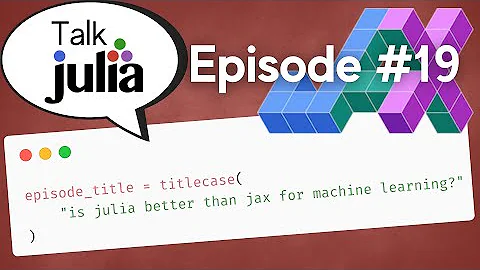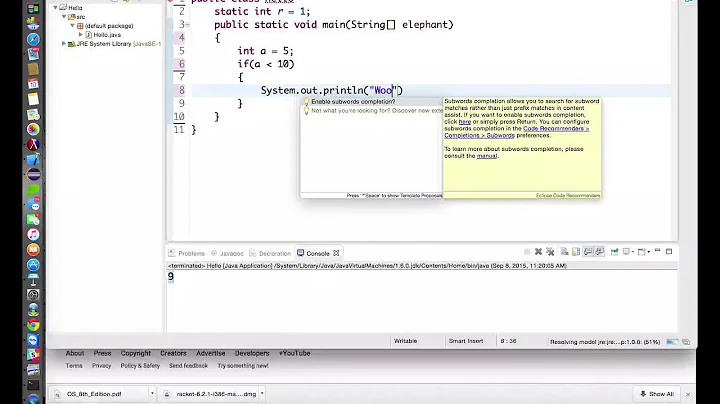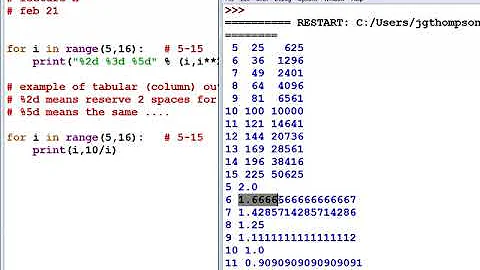Which is the more efficient syntax for NAND (not both true) in C#?
Solution 1
It is not quite as simple. The C# language doesn't model a NAND gate at all with the && operator. That operator has short-circuiting behavior, very convenient in a C# program. And common behavior for the curly-brace languages, an expression like this doesn't crash your code:
arr[] = somefunction();
int ix = foo;
if (ix < arr.Length && arr[ix] == 42) {
EmailBookRecommendation();
}
But that's a very inefficient version of the expression, this one is way more performant:
if (ix < arr.Length & arr [ix] == 42)
Which is a perfectly legal expression, the & operator works just fine with boolean operands. But unfortunately this one crashes your code. It evaluates the array indexing expression and that goes Kaboom! with IndexOutOfRangeException.
That's not ever a problem with a NAND gate, it doesn't crash when the first input is F :) There are many possible C# expressions where that's not a problem. You really should favor the & operator for those. It makes a huge difference. So always write something like this:
if (ix >= 1 & ix <= 42)
Which of course can never fail. To understand why the && operator is so much more inefficient than the & operator, you have to understand branch prediction. That's covered very well in this answer.
Solution 2
Neither. They both have exactly the same short circuiting behavior, and the compiler will turn both into MSIL requesting a test of A, followed by a conditional branch. The branch where A was true will then have a test of B.
What you should be worrying about is:
!(A && B)
vs
!(B && A)
which are different in case either A or B causes side effects or complicated calculations.
The possible exception to both being the same is if you have a custom definition of operator!, in which case they aren't actually equivalent at all.
Related videos on Youtube
Matthew
I love creating elegant software solutions to novel problems. Data is the future. Optimization is not our enemy.
Updated on September 15, 2022Comments
-
 Matthew almost 2 years
Matthew almost 2 yearsThe NAND logic gate for two conditions (A and B) is
trueas long as either condition is true, or none of the conditions is true; and it isfalseif both conditions are true.F NAND F = T F NAND T = T T NAND F = T T NAND T = FIn C# I can write this in at least two ways:
!(A && B)or
(!A || !B)Which is more efficient?
It seems to me that
if(A)then B is always tested andif(!A)then B is never tested.But then the first condition must invert the result....
-
 Ben Voigt almost 11 yearsinverting the result is the same as swapping the code in the
Ben Voigt almost 11 yearsinverting the result is the same as swapping the code in theelsewith the code in theif... no actual runtime instruction needed
-
-
 Matthew almost 11 yearsassuming A and B are both
Matthew almost 11 yearsassuming A and B are bothboolthen there is no functional difference? -
 Ben Voigt almost 11 years@Matthew: Assuming both
Ben Voigt almost 11 years@Matthew: Assuming bothAandBare local variables of typebool, there should not be any difference in the generated code. -
 Matthew almost 11 yearsI was thinking it would depend on the likelihood of A being
Matthew almost 11 yearsI was thinking it would depend on the likelihood of A beingtruebut you're telling me they compile to identical code? Interesting. -
 Ben Voigt almost 11 years@Matthew: The definition of
Ben Voigt almost 11 years@Matthew: The definition of&&and||both require the compiler to skip testingBifAis found to be false. -
 Matthew almost 11 yearsI don't think so...
Matthew almost 11 yearsI don't think so...A || Bwill test B if A isfalse.. It will not test B is A istrue. -
 Ben Voigt almost 11 years@Matthew: In your question I see
Ben Voigt almost 11 years@Matthew: In your question I see(!A) || (!B), notA || B. So it will testBif(!A)is false, which means only ifAis true. -
 Matthew almost 11 yearsI have edited my question, trying to explain why your assertion that they compile to the same code is confusing. I accept that they have the same short-circuit... but then doesn't the first need an additional operation to invert the result?
Matthew almost 11 yearsI have edited my question, trying to explain why your assertion that they compile to the same code is confusing. I accept that they have the same short-circuit... but then doesn't the first need an additional operation to invert the result? -
 Ben Voigt almost 11 years@Matthew: There are two blocks of code, a then-part and an else-part. For both, the compiler will jump straight to the then-part if
Ben Voigt almost 11 years@Matthew: There are two blocks of code, a then-part and an else-part. For both, the compiler will jump straight to the then-part ifAis true, otherwise testB, and jump to the then-part ifBis true (if not, jump to else-part). There's no operation to invert an if-statement, it just switches the jump to either the then-part or the else-part. If you wroteC = !(A || B);, it might be different, but probably not. -
 Ben Voigt almost 11 years@Matthew: If you do find any differences in the generated MSIL, please post them and we'll take a closer look.
Ben Voigt almost 11 years@Matthew: If you do find any differences in the generated MSIL, please post them and we'll take a closer look. -
user1703401 almost 11 yearsThis answer completely misses the point, the OP asked about efficiency.
-
 Matthew almost 11 yearsIn my particular case, I am comparing integer values to literals. So it's something like
Matthew almost 11 yearsIn my particular case, I am comparing integer values to literals. So it's something likeif(Foo.A==CONST1 NAND Foo.B==CONST2){Bar();}So I could easily use the "&" rather than "&&" without procedural complication or slowdown. If I read you correctly it is more performant to use "&" and "predict" the resulting condition? I'm not quite sure I follow. -
 Ben Voigt almost 11 years@Hans: If you can't understand that two pieces of source code which compile to the same thing therefore have the same efficiency...
Ben Voigt almost 11 years@Hans: If you can't understand that two pieces of source code which compile to the same thing therefore have the same efficiency... -
 Ben Voigt almost 11 yearsExcept that (1) the question didn't ask about
Ben Voigt almost 11 yearsExcept that (1) the question didn't ask about&, and (2)&&is not "much more inefficient than the&operator", it depends completely on the expressions involved. -
Piedone over 7 yearsCan you elaborate on "huge difference"?
-
Tim over 3 yearsI think the second answer in the question you linked to actually explains why && is good to use, or rather that sorting data intelligently pays dividends. But it depends on context. It certainly augments the first answer, and both (and the question) were informative. Why wouldn't you just write
(A !& B)though? Assuming you're working with two boolean variables and not testing expressions that could have negative consequences.








